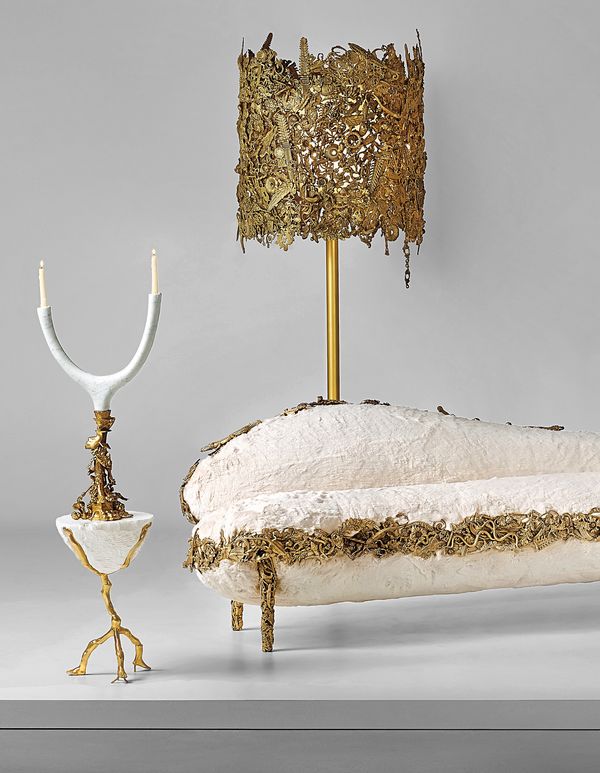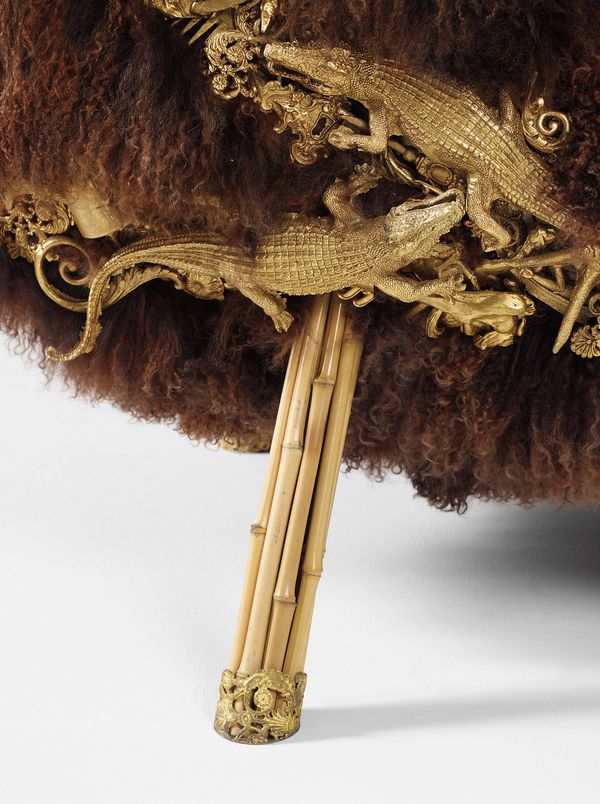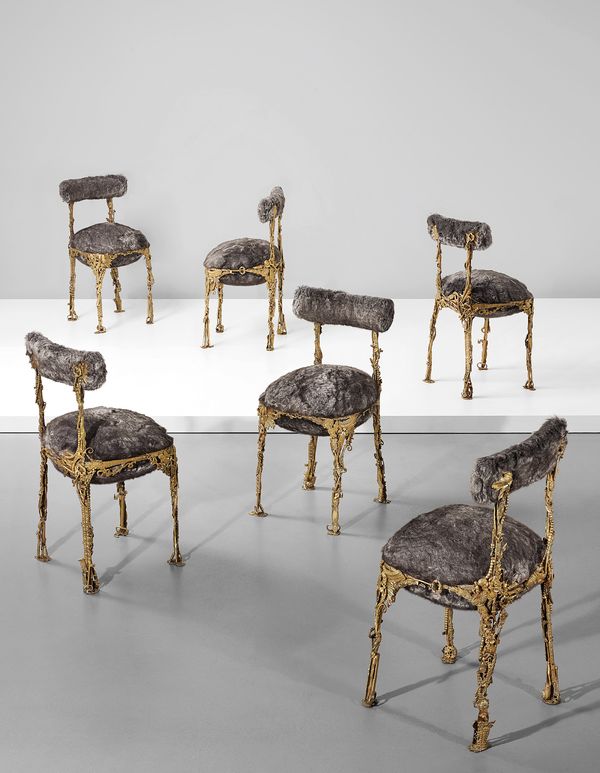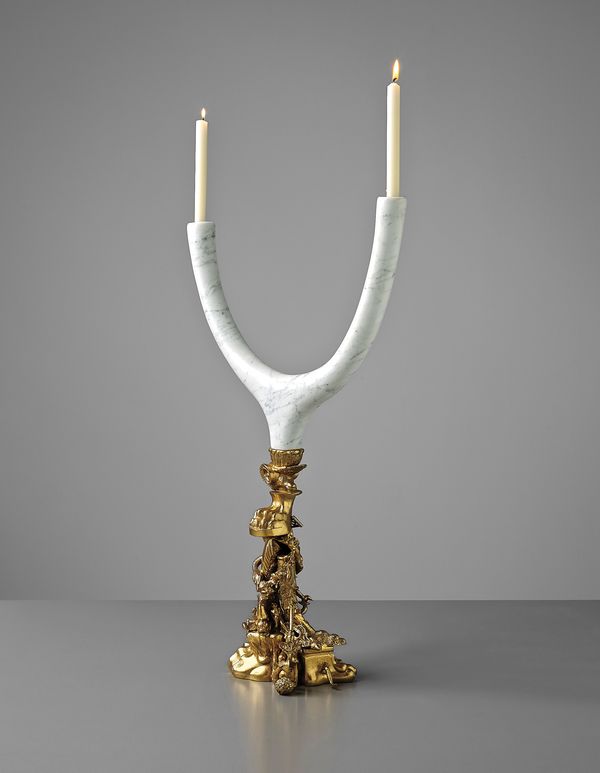Fernando Campana and Humberto Campana 'Ouro Preto' standard lamp, 'Anthropophagic' sofa, 'Humberto' side table and 'Aleijadinho' candlestick from the 'Brazilian Baroque' series 2011-'12. Property from a Private Collection
Fernando and Humberto Campana initially presented the Brazilian Baroque Collection in 2011 at the Palazzo Pamphilj, home of the Brazilian embassy in Rome. At first I was puzzled about the surprising combinations of materials and forms, and it took me a while to recognise that, here, their work had changed in a decisive way. These objects obviously represented a retrospective of their previous oeuvre and a new approach to its topics such as tradition and modernity, literacy and subculture, the organic and the hybrid, collage and assemblage.
Fernando Campana and Humberto Campana 'Settimio' cabinet and 'Anhanguera' sofa (details)
In a particularly complex way, the Brazilian Baroque Collection assimilates the phenomenon of time — a theme that in fact has had an ongoing role in the Campanas' projects in a more or less explicit way: in Naturaleza Morta of 1990, for example; in sketches entitled Blow Up around 2002; or in the Transplastic and the living room furnishings of Uma Famiglia in 2006. In Rome, the Brothers made reference to the historic Palazzo Pamphilj itself, for which the collection originally was commissioned, and the Baroque era more generally, borrowing the gilding and marble, the abundant vocabulary of figures, masks, as well as natural and architectural fragments. They found further inspiration in Roman archives and the decorative features of furnishings produced by Roman artisans.
The final production has been executed entirely by local craftsmen, who assembled existing moulds as if they were a new kind of malleable matter which then was linked to sleek abstract elements. In this abrupt confrontation of formal languages, the Campana Brothers are challenging any clear ideas of style and produce a disturbing aesthetic which, despite its affiliation to a well-established Postmodernism, evokes a vibrant contradiction to any familiar notion of beauty.
It is [the Brothers'] use of alien objects that provides a provocative expression of the fleeting and ambiguous quality of creation.
Fernando Campana and Humberto Campana Set of six 'Lupa' chairs, 2011
The pale, light-absorbing marble surfaces, a patchy covering of grey fur in the manner of Le Corbusier, or the conical table legs borrowed from an industrial context find themselves in contrast with the glowing bronze. In various degrees and states of aggregation, these materials both adorn and disturb each other at the same time — an irritation that is equally present in the different processes of production: the serial casting of the bronze, the welded joining of the decorative parts and the slow manual polishing of the marble.
Fernando Campana and Humberto Campana 'Aleijadinho' candlestick, 2011
With this harsh clash of their vocabulary, the Brothers critically review an oeuvre that spans modernist and indigenous elements and formulates a characteristic of our time which is, typical for the Campana work, intelligently refected in a title forged from the exoticism of 'Brazilian', a 'Baroque' nostalgia and the elitist 'Collection'. It subtly interlocks with our own reality while refecting a world of imperfect and broken identities, a world of strange but strong images with plenty of potential for an unpredictable evolution. However, even more than in any image, it is the use of these alien objects that provides a provocative expression of the fleeting and ambiguous quality of creation.
Mathias Schwartz-Clauss is curator of 'Antibodies', Vitra Design Museum's retrospective of the Campanas’ work in 2009, and director of Domaine de Boisbuchet in France, where Fernando and Humberto Campana have tutored numerous workshops in the past.




